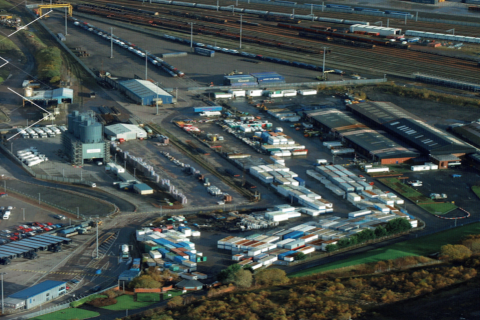5 critical points for European intermodal transport

Intermodal transportation is frequently described as a cornerstone for the green transition. The rail sector uses it as a flagship concept in terms of sustainability, efficiency and competitiveness to long-distance trucking and sea transport. Yet, intermodal transport suffers from low punctuality and effectiveness, creating trust issues for customers and shippers.
Too many expectations, lack of communication, or insufficient support by policy and decision-makers? What troubles the intermodal supply chain more? In the list below, you can find 5 points of concern and future development as shared during a panel discussion with Halina Bajczuk (PKP Cargo), Robert Baan (Dow Chemical) and Martin Hubenak (Port of Antwerp) at the RailFreight Summit Poland 2022.
- Shippers are still unhappy and turning to road transport: Robert Baan from Dow Chemical explained how much manufacturers and shippers miss being included in discussions about intermodal transport. “We want to abandon roads and use intermodal supply chains because we have green goals,” he said. However, they need to consider their customers who, in the end, care about delivery times and balanced costs-just like every business. The thorns of intermodal transport can be summed up in these two demands. “We want to use intermodal but cannot because we want good services for our customers that we cannot reach. Customers demand a return to the road,” highlighted Baan.
- Bad communication is the core issue: “We do not miss reliability on operations but communication. Many operators are not communicating when issues occur,” said Martin Hubenak. “Problems are always there; we expect cooperation between all factors to improve them,” said Baan. In the end, the delivery time is a metric that matters to manufacturers. “We do not expect to avoid delays, but we expect the shipment to arrive on the latest communicated delivery time, or at least even if it doesn’t, we need to know it,” said Baan pointing out that communication on the intermodal supply chain could be disastrous.
- Infrastructure managers are still absent: speaking of communication, Bajczuk tried to defend operators by mentioning that they also face such issues, especially with infrastructure managers. “It is all about infrastructure and communication with infrastructure managers. IMs should not distance themselves because they must discuss the industry’s needs and feel its pulse. It’s not about expensive investments with no results. They need to make smart investments and consider the closures coming along with these investments. We should plan together, and IMs should consider our needs,” underlined Bajczuk.
- Integration of services crucial: do we need more companies like Hupac? Should we start thinking like them? Bajczuk posed these questions to herself and fellow speakers. In the intermodal chain, you cannot provide plans B and C to customers due to the multiple companies involved, she said. Hubenak added that “railway undertakings should diversify their operations, contribute in different ways in the intermodal chain, and have a more comprehensive overview of the operations,” implying that intermodal transport demands intermodal companies that can also undertake the first and last-mile operations without involving external partners. An integration of intermodal services is crucial.
- Too many expectations?: are expectations for intermodal transport realistic, or do we just expect too much from it? Is intermodal transport underperforming or not, and what can one expect from it? “We don’t expect too much. We just hope to be competitive with road transport and not return to it. A few years back, we had good results with intermodal, but what changed? It’s all about excuses and unexpected events,” concluded Baan.
Also read:
-
The rail freight industry needs to regain its customers’ trust
-
Rail freight headaches: what are the main problems for the industry?
You just read one of our premium articles free of charge
Want full access? Take advantage of our exclusive offer





As true as said! (Mr Baan, in particular, did express it very good, etc.)
However, even worse it is.
The 200 year old industry, far too much cares about parts interests – and stuck at the mercy of taxpayers, quantity now is what matters, as within competence of our mandated.
Fact that squats and cracks appear – at simple medium! – is attended, by added grinding, etc., etc….
(80 G, the already at modest speeds plaguing surface of rail, now calls for a sustainable, serious attending, etc.!)